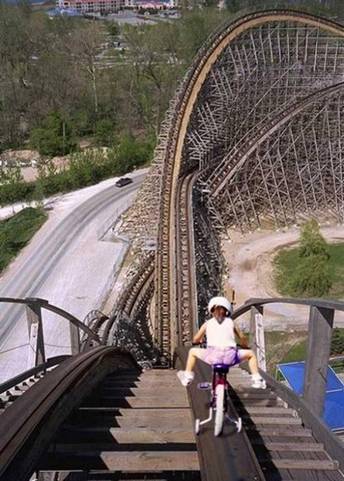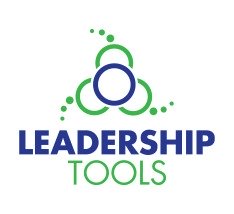Crisis Leadership
A case study exploring crisis leadership

Donna Rae Scheffert is a facilitator, trainer, and strategic planner. She brings experience from over thirty years working with high performing groups. Sometimes conflict management is part of the solution for groups to make progress.
Scheffert is President of Leadership Tools, a U.S. based consulting firm. She is a retired Leadership Development Specialist from the University of Minnesota Extension. She spent over 20 years creating leadership information, tools and training. She is the owner of online-leadership-tools.com
Helping Others During A Crisis
(Story written November, 2009)
Once again I took the last exit before driving onto the bridge that collapsed in Minneapolis in 2007. That catastrophe killed 14 people and injured nearly 150 others. The bridge was rebuilt in record time.
I used to drive this way all the time to my former job location. Now I came this way because Dr. Ron Heifetz, a visiting professor from Harvard University, is speaking about his current research on “Leadership in a Crisis.”
Heifetz told us that “leadership will require new skills tailored to an environment of urgency, high stakes, and uncertainty.”
These are the characteristics of times of crisis like the bridge collapse. Good Samaritans must have intuitively experienced those crises factors as they helped children get out of a school bus that was tipping precariously. Some got into the cold river to pull people from sinking cars. Other people could relate when the professor illustrated key concepts using the New York City on 9/11 crisis.
During the time of the bridge collapse I was one of several consultants teaching a Leadership Academy for all managers at the Department of Transportation (DOT). The DOT bridge department was under scrutiny as were all leadership and employees of the state department. While I did not work directly with this incident, my empathy was with the familiar faces and the agency during this tragedy.
And, although I did not use the bridge on a regular basis, I had crossed it twice the week it collapsed. My co-worker Joyce had a near miss. She left work and realized while sitting in traffic that she had left her purse in her office. She turned around, got the purse, decided to take a ‘faster route’, and crossed the ill fated bridge. Joyce estimates that she got off the bridge just minutes before the collapse.

What Should Leaders Do in a Crisis?
During crises times, leaders must first respond to the emergency and then focus their energy on the underlying problems that led to this. From his research Heifetz identifies five tasks of leadership during the emergency phase: 1) presence – authorities must be present; 2) speak to people’s experience – be in touch with where people are at with pain, fear, loss of loved ones; 3) poise – people will read you to see if this is a ‘containable’ situation and to find faith in the collective capacity to make it through; 4) drive the prepared organizational responses-use the plan to reduce panic, and 5) improvise – as needed to the extent that is possible in the situation.

After you have stabilized the situation, you enter the adaptive phase. Often issues are a bundle of problems. For example, in the case of the collapsed bridge, some of the factors may be public funding for transportation infrastructure, design specifications, inspection protocols, and prioritization of improvement projects. You must set your strategic priorities and work toward them.
In this phase, Heifetz identifies a two step process. First, tackle the immediate adaptive challenge and then build an adaptive culture by “enriching who you are; you are not a museum piece.” Some of the components of this phase include unbundling the technical from the adaptive challenges, engaging the relevant publics, distinguishing the essential from the expendable, encouraging experimentation, depersonalizing conflict, creating a culture of courageous conversations, keeping your eye on the work, acknowledging interdependence, distributing leadership responsibility, protecting voices of leadership without authority, and leveraging diversity. I wondered how much attention these tasks now receive in leadership training and how much they should receive.
One memorable line from the professor was, “if you get so good at the emergency response, people may become complacent and challenges may be ignored, avoided, or only partially fixed.”

Closing Ideas
I thought more about my own experience with the bridge collapse. Right after the incident, my grade school child would ask me as I rushed out the door, “Do you have to drive over any bridges on your way to work today?” And, I did change my route to avoid one long bridge that the newspaper listed as “structurally insufficient.” Waiting in the line of traffic while feeling the bridge shake had taken on an entirely new meaning to me.
Now, just more than two years later, I rarely think about bridges or the department of transportation’s valiant effort to keep our roads and bridges safe. I intend to pay more attention to Heifetz’s parting shot: leaders may get into the habit of comforting people and have to relearn how to discomfort them to adapt to challenges today.
After the economic crisis abates, Heifetz and colleagues assert that we should not go back to business as usual.
Resource Book
The Harvard Business Review has an excellent article
Crisis Leadership Article

Leadership Tools
Facilitation. Training. Strategic Planning.
Donna Rae Scheffert
809 Mayflower Ct.
Northfield, MN 55057
Let me assist you and your organization.
Call me at 612.360.4484
leadershiptools@charter.net
